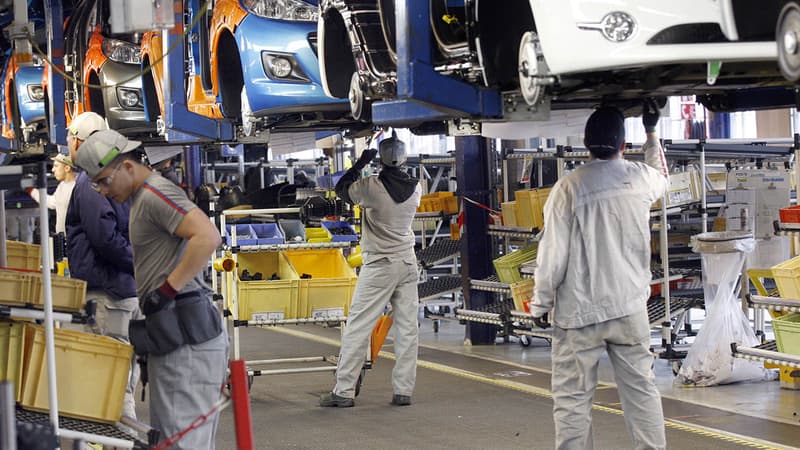The future “is dead”, “will close”, the production “will disappear”: in front of the historical automotive factory of Poissy (Yvelines), the last to produce cars in Ile-de-France, Stellantis employees are convinced of their imminent disappearance.
In the porch of the immense site, which extends more than 123 hectares, workers enter and leave on Tuesday at noon, at the time of the change of equipment in the factory.
Backpack on the shoulder, professional badge around the neck, in a navy blue work jacket, many have a closed face and do not stop, or briefly.
Three weeks of partial unemployment were announced eight days before the 2,500 factory employees, including 2,000 workers, due to a “difficult market in Europe.”
It is the mental state that dominates among the employees interviewed: none believes in the survival of this historical factory, which has manufactured cars on the edge of the SENA since 1937, owned by Peugeot since 1978 (before Stellantis since 2021).
“Two years to break everything”
“It’s sad, but production leads to disappear,” analysis for AFP Christophe Villemer. The young man works for a Stellantis supplier and “will always have a job.”
According to him, the Opel Mokka, which is practically the latest model made in Poissy (420 vehicles per day), is too expensive compared to competitors.
Some DS3 are still arising from the two production lines, but “it must have the fingers of the hand,” according to Patrice Zahn, representative of the South of the Social and Economic Committee (CSE), is also at the entrance.
I had already experienced the painful closure of the PSA factory in Aulnay (Sena-Saint-Denis), in 2014, after four months of strike.
Patrice Zahn expected partial unemployment, “but we were surprised.” It is “unheard of Poissy,” said Jean-Pierre Mercier, another representative of the South, at the time of the announcement.
The group, which crosses a difficult pass, with low sales by 9.47% in France since the beginning of 2025, plans to stop producing the Mokka, without specifying when, and has not announced the manufacture of any other vehicle in Poissy.
“We believe we have for a year and a half, two years to break everything,” predicts Patrice Zahn.
Research and Development
Employees have just learned to stop for a few days from two other factories, in Sochaux (Doubs) and Mulhouse (Haut-Rhin), after similar ads about sites in Germany, Spain, Poland and Italy.
When the personnel representatives question management, she responded, according to Patrice Zahn, that “we will maintain the industry here, the activity.” “They are no longer talking about cars production.”
The president of the Ile-de-France region, Valérie Pecresse, also made similar comments.
Commenting in May the possible establishment of the future Paris Saint-Germain stadium in Poissy, in a place that belongs to Stellantis, which worries the unions, he said that “it cannot be Stellantis or PSG, it must be Stellantis and PSG.”
But “we will undoubtedly produce more cars in Poissy, since we no longer produce cars in Flins,” he added.
The old Flins Renault factory, in the Yvelines as well, where cars between 1952 and 2024 were made, now it becomes the circular economy and employs around 2,300 people.
For Poissy workers, “the three weeks of partial unemployment reinforce the idea that it will end up closing,” says Patrice Zahn. “There are angry, disappointed or worried employees, there is a lot back to school,” he said.
In addition to the factory, Poissy also organizes the French headquarters of the group (whose central office is in the Netherlands). This newly opened “green” campus brings together part of the research and development functions, the test stockings and the tertiary activities of Stellantis, thus receiving 8,200 employees, “details the group on site.
“With a large research center like the one you just opened, they don’t risk anything,” said an employee who wants to be anonymous.
Source: BFM TV


